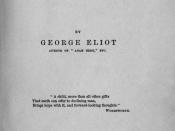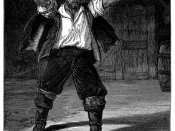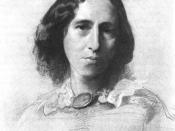Fairy tale and faith in Silas Marner.
George Eliot abandoned work on her historical novel Romola in October 1860 to take up work instead on Silas Marner. She relates in letters how the 'merest millet-seed' of the story grew on her, and how 'It [the idea for the novel] came to me first of all, quite suddenly, as a sort of legendary tale, suggested by my recollection of having once, ... seen a linen-weaver with a bag on his back; but, as my mind dwelt on the subject, I became inclined to a more realistic treatment.'. Silas Marner contains realistic and fantastic elements, which Eliot skillfully balances, and uses each to enlighten the other.
Whilst it would be crass to term Silas Marner exclusively a fairy tale, many of its key elements are very similar to that basic form of story telling. Eppie is a foundling child, who transpires also to be an heiress to a rich but morally dubious landowner.
Silas himself is not just a miser whose journey to recovery is traditionally made through ordeals and the redeeming power of what Eliot called 'pure, natural human relations', but a weaver, a craft associated both with the Devil and with other fairy tales. Both Eppie and Aaron are written to serve not as characters in their own right but plot devices to effect events and highlight other changes, principally in Silas, but in Eppie's case also in Godfrey: their one-dimensionality as paragons of Good belongs to the Fable rather than a novel of psychological complexity. Crudely, the novel is morally instructive, as fairy tales are: the importance of honesty and love are emphasised; and in the story's arc the 'good' characters generally emerge triumphant over the 'bad'.
A key feature of many fairy tales is the presence...


